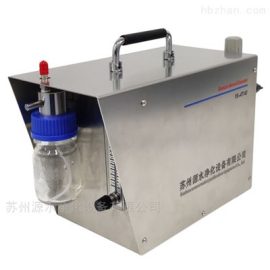
# Aerosol Generator: Principles and Applications in Modern Science
## Introduction to Aerosol Generators
An aerosol generator is a device designed to produce fine particles or droplets suspended in a gas, typically air. These devices are essential in various scientific, industrial, and medical applications. The ability to generate aerosols with precise control over particle size and concentration makes them invaluable tools in modern research and technology.
## Principles of Operation
Aerosol generators operate on several principles, depending on the desired output and application. Common methods include:
– **Nebulization**: This process involves breaking up a liquid into fine droplets using ultrasonic vibrations or compressed air. Nebulizers are widely used in medical applications for drug delivery.
– **Atomization**: Similar to nebulization, atomization uses mechanical forces to create fine droplets. This method is often employed in industrial settings for coating and spraying applications.
– **Condensation**: This technique involves cooling a vapor to form liquid droplets. It is commonly used in environmental studies to simulate atmospheric conditions.
– **Electrospray**: This method uses an electric field to create charged droplets from a liquid. Electrospray is particularly useful in analytical chemistry for mass spectrometry.
## Applications in Modern Science
Aerosol generators have a wide range of applications across various fields:
### Medical and Pharmaceutical
In the medical field, aerosol generators are crucial for delivering medications directly to the respiratory system. Nebulizers, for example, are used to treat conditions like asthma and chronic obstructive pulmonary disease (COPD). They ensure that drugs are delivered in a form that can be easily inhaled and absorbed by the lungs.
### Environmental Science
Aerosol generators play a significant role in environmental research. They are used to simulate atmospheric conditions, study air quality, and understand the behavior of particulate matter. This research is vital for developing strategies to combat air pollution and its effects on health and climate.
### Industrial Applications
In industry, aerosol generators are used for coating, spraying, and cleaning processes. They ensure uniform application of materials, which is essential for quality control in manufacturing. For example, in the automotive industry, aerosol generators are used to apply paint and coatings evenly on car bodies.
### Research and Development
Aerosol generators are indispensable in research labs for studying particle behavior, developing new materials, and testing air filtration systems. They provide a controlled environment for experiments, allowing scientists to obtain accurate and reproducible results.
## Conclusion
Aerosol generators are versatile tools with a wide range of applications in modern science and industry. Their ability to produce fine particles with precision makes them invaluable in fields such as medicine, environmental science, and manufacturing. As technology advances, the capabilities of aerosol generators continue to expand, opening new possibilities for research and innovation.
Understanding the principles and applications of aerosol generators is essential for anyone involved in scientific research or industrial processes. These devices not only enhance our ability to study and manipulate particles but also contribute to improving health, environmental quality, and industrial efficiency.
Keyword: Aerosol Generator
